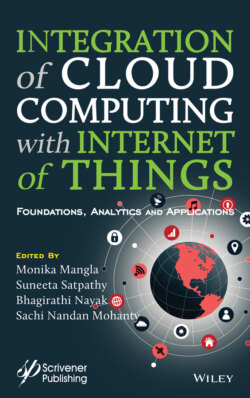Читать книгу Integration of Cloud Computing with Internet of Things - Группа авторов - Страница 27
1.5.2 Semantic Interoperability (SI)
ОглавлениеThe last decade witnessed a many-fold increase in a host of heterogeneous devices, actuators, sensors, etc. with varied applications in the IoT platform. To cope up with the smart environment, an efficient distribution, monitor, support, coordination, control, and communication among these sensors remains essential that gives rise to the term interoperability. The interoperability can be achieved with the following major layers as shown in Figure 1.12.
Technical interoperability is concerned with the communicability among the things or objects in IoT domain using the software and hardware. On achieving the suitable connectivity, the syntactic interoperability deals with the data models, data formats, data encoding, communication protocols, and serialization techniques using certain specified standards. Finally, Semantic interoperability establishes the desired meaning to the content and assists to comprehend of the shared unambiguous meaning of data. The interoperability concept can be better visualized using the five major perspectives and is given in Table 1.2.
Figure 1.12 Different layers of interoperability.
Table 1.2 Taxonomy of interoperability: major perspectives.
| Taxonomy of interoperability | Attributes |
| Device interoperability [19] | Involves both the low and high-end devices High-end devices are Raspberry Pi, smartphones, etc. with good computational abilities and resources Low-end devices are low-cost sensors, actuators, RFID tags, Arduino, OpenMote, etc. with resource-crunch, communication, low energy, and processing abilities. It aims for better integration and communication among several heterogeneous devices in advanced IoT platforms. |
| Network interoperability [20] | The network remains is multi-service, multi-vendor, largely distributed and, heterogeneous. It facilitates the better transfer of data among several smart systems using efficient networking systems. It can alleviate issues such as addressing, resource optimization, routing, security, QoS, mobility support, etc. |
| Syntactical interoperability [21] | It allows interoperation of the format and structure of the data during communication among heterogeneous IoT devices, entities, domains, systems, etc. It includes the syntactic set rules in the same or some different grammar It is significant in the case of disparities between the encode and decode rules involving the source and the end-user. |
| Semantic interoperability [22] | It allows the meaningful exchange of knowledge and information among agents, services, and applications. It is significant when the automatic interoperation of IoT information or data models is not materialized due to the difficulties in descriptions and understandings of operational resources or procedures. |
| Platform interoperability [21] | The need arises with the advancement of diverse and versatile operating systems, programming languages, data structures, IoT architectures, access mechanisms, etc. Different mechanisms are developed for efficient data management involving several IoT platforms. Similarly, cross-platform and cross-domain in different heterogeneous domains are addressed. |
